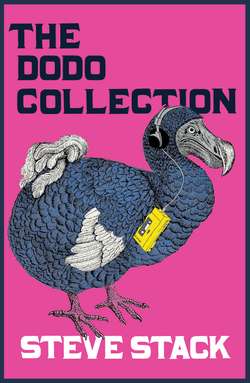Читать книгу The Dodo Collection - Steve Stack - Страница 22
ОглавлениеCompact Discs
Can you remember when compact discs were the future? When the presenter on Tomorrow’s World tried to prove they wouldn’t scratch or jump (which we all now know was a lie but we believed back then)? When you plugged in your first CD player? I bet you can still remember the first CD you ever bought. Mine was Hello Hello Hello (Petrol) by Something Happens, a CD single that I purchased a full three months before I had a machine to play it on.
They changed everything. The sound quality was much better than the previously popular cassette (although not as warm and rich as vinyl, as luddites were keen to point out at every available opportunity). They were smaller, so took up less space. They contained more information, so had a longer playing time. There was no A or B side, so bands approached albums very differently, recording songs that were intended to be listened to in a 70(ish)-minute stretch, rather than two 25-minute sessions. The inner sleeve was replaced by the CD booklet. And, although they weren’t indestructible and did skip, they were much more durable than tapes or LPs.
During the late ’80s and throughout the ’90s, music fans spent billions of pounds replacing their old tape and LP collections with new CD versions, which were often remastered with extra tracks. The CD format was seen as the perfect fit for the new albums that came out during that period – albums such as Brothers in Arms by Dire Straits, that is widely claimed to be the first million-selling CD, although U2’s The Joshua Tree is often given that title.
The compact disc itself was invented in the late ’70s and was an offshoot of the laserdisc technology of the same period. Both Sony and Philips were working on prototypes, and the first test CD was a recording of Richard Strauss’s Alpine Symphony. That Tomorrow’s World demonstration took place in 1981, and the album they played was Living Eyes by The Bee Gees which, ironically, is an album that pretty much the whole world has subsequently forgotten including, quite possibly, the brothers Gibb themselves.
The CD went into commercial production in 1982 and the first album to be released on it, rather than an existing album being made available on the format, was 52nd Street by Billy Joel. Since that time, several billion have been manufactured and sold; 400 million a year at the height of its popularity.
Sadly for a technology with the word ‘compact’ in its name, the CD is slowly being killed off by digital music. We can now hold our entire music collection on a device about the size of a playing card, whereas we used to require countless CD racks from IKEA to do the same. Even hardened musos are seemingly content to download new albums straight to their iPod or phone, and sales of compact discs are plummeting, with some artists ignoring the format completely. The CD isn’t dead, and probably won’t be for a fair while given the sheer volume of discs that are out there, but it deserves its place on this endangered list as it is certainly on the decline.
And, somewhere in his huge mansion, Mark Knopfler is softly crying in front of his wall of platinum discs.
Dodo Rating:
